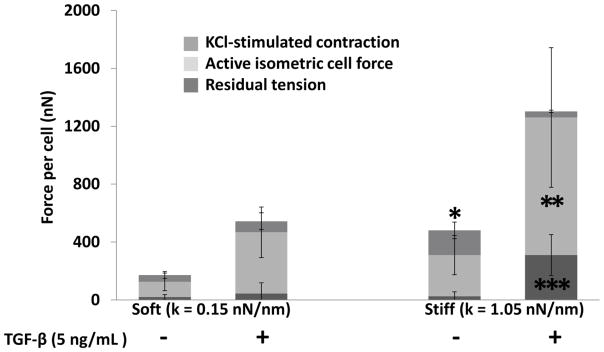Figure 4.

Active isometric cell force, KCl-stimulated contraction, and residual tension in micro-tissues cultured against soft (0.15 nN/nm) or stiff (1.05 nN/m) posts with or without TGF-β1 (5 ng/mL) after four days of culture (n ≥ 3). Against the stiff boundary with TGF-β1, cells are in a state of high static contraction and produce negligible additional force in response to KCl stimulation but generate large residual tension in the matrix compared to other groups. Cells cultured against stiff boundaries without TGF-β1 provide a stronger response to KCl than the other groups. Two-way ANOVA p<0.05: *: significantly higher KCl-stimulated contraction from all other groups, **: significantly higher active isometric cell force from all other groups. ***: Significantly higher residual tension from all other groups.
